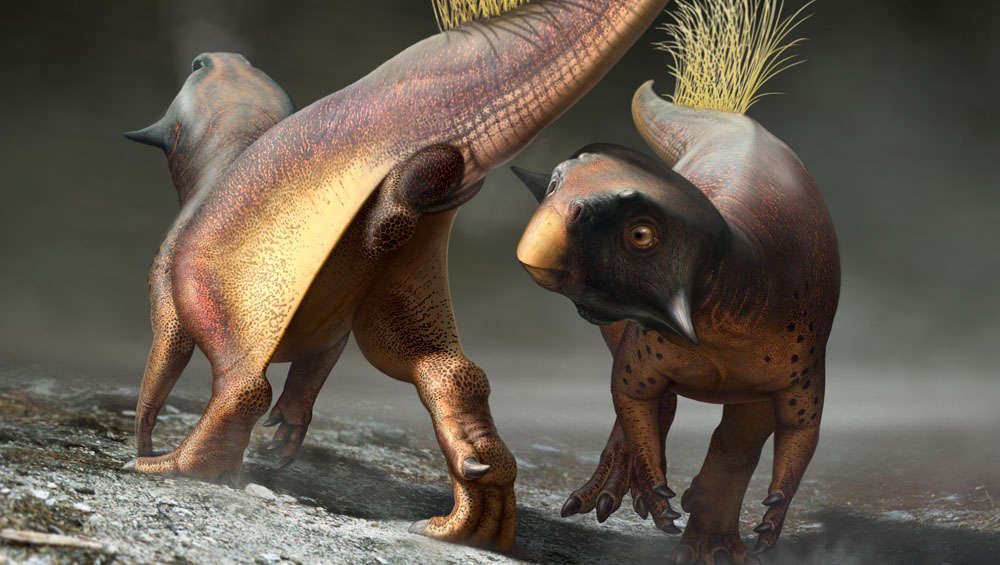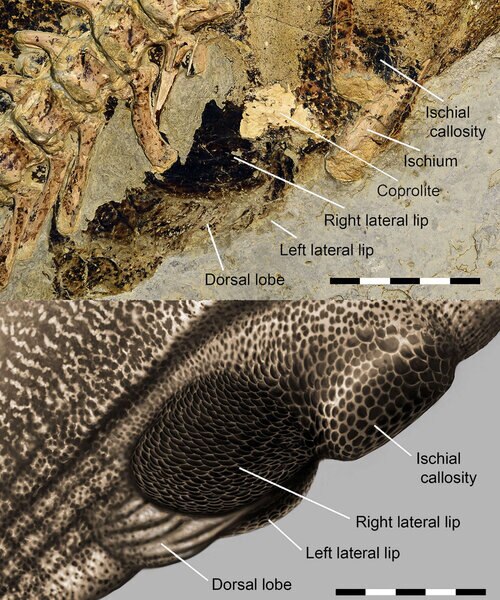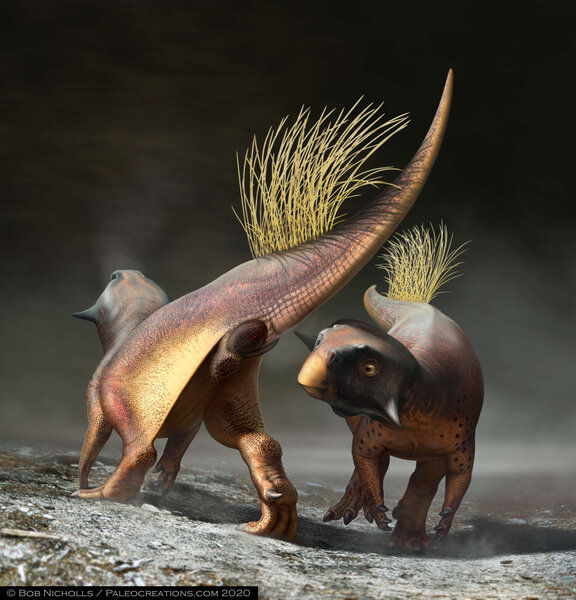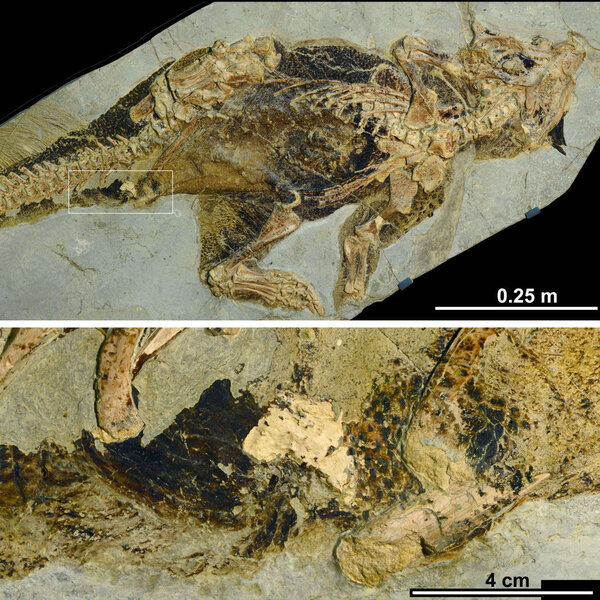Create a free profile to get unlimited access to exclusive videos, sweepstakes, and more!
So now we know what a dinosaur’s nether regions looked like, and they were flashy

Whether it was their dagger teeth, fantastic headgear, or just the sheer size of some of them, most dinosaurs always had something to show off — so apparently no one really cared about what was under the tail until now.
Just in time for Valentine’s Day, scientists have found out what the sexy parts of a dinosaur looked like. And they seem to have needed something flashy down there for mating displays. No one ever knew what the cloaca — a multipurpose opening that tetrapods (with the exception of most mammals) use to relieve themselves, mate, and for females, lay eggs — of a dinosaur looked like before, until now. Scientists have finally reconstructed dino private parts and realized that they were beyond just functional. When it was breeding season, these lusty lizards really went all out.
“Since we believe that the dinosaur possessed scent glands and visual display by virtue of having the cloaca being highly pigmented, we can speculate that they must have been displaying their rear ends and inspecting them in order to assess the potential of the others as future mates,” Jakob Vinther, who led a study recently published in Current Biology, told SYFY WIRE.
From Vinther’s findings, paleoartist Robert Nicholls visually reconstructed the cloaca of a psittacosaur that was fossilized in what started out as the anoxic mud at the bottom of a lake, making for exceptional preservation. Specimens that hold up this well over millions and millions of years are rare. Some of the psittacosaur’s scales, skin, and soft tissues were frozen in time because of the lack of oxygen. Decomposers like bacteria, fungi, and insects require oxygen to survive, so they can eat away at dead tissues, which is part of the reason a dinosaur with a mostly intact cloaca never emerged before. The only minor issue is that the creature had gotten somewhat squashed after being buried for so long.
“The fossil got compacted, but without any distortions,” Vinther said. “So we just had to project all the features back in three dimensions.”
The cloaca of a dinosaur, or at least this dinosaur, is unlike that of anything alive. It turned out to be closest to those of alligators and crocodiles. Crocodilians are the closest extant relatives of birds and, of course, dinosaurs, so this obviously made sense. With the exception of birds, all tetrapods with a cloaca have the penis or clitoris hidden away inside, but the absence of either in this specimen made it impossible to tell whether it was male or female. What could be seen was that the outer area was pigmented with melanin, probably as a visual signal to potential mates. Its large lobes are thought to have been the same musky scent glands used by crocodilians who want to get in the mood.
Dinosaurs weren’t the only animals to put on NC-17 displays when trying to attract the opposite sex. Besides their living relatives, there are other animals that flash whatever fancy things they’ve got under their tails. Some types of salamanders also do it in style. Though mammals are anatomically different, it would be hard for a female baboon not to be distracted by the male’s snazzy derriére when he’s trying to get her attention. However, whether all dinosaurs had racy displays like this remains unknown for now.
“These fossils are rare, and who knows when we will ever find another one,” Vinther said. “It would be nice to have a few more cloacas from the same animal to see if there is variation that may reveal something about their sex, and it would be interesting to see cloacas from other dinosaurs to see how much variation existed.”
For the record, humans are much better off with displays of roses, chocolates, and champagne.

















